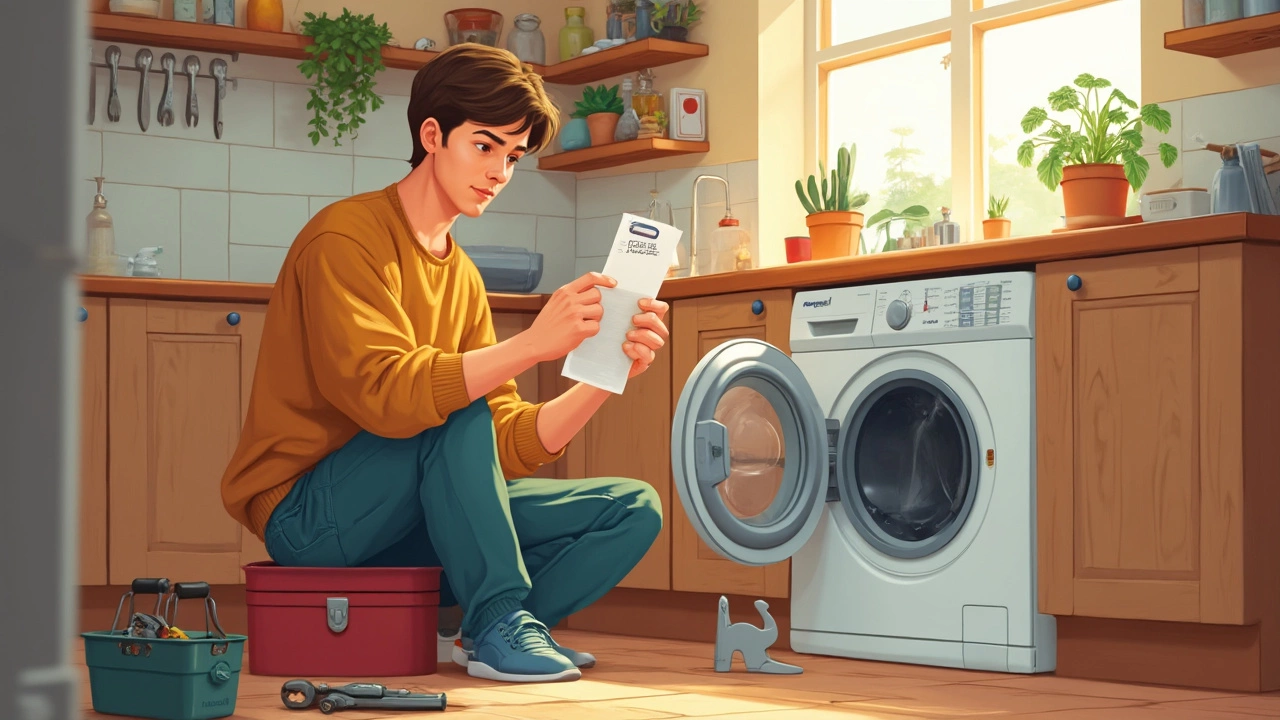Washer Troubleshooting Guide – Quick Fixes for Common Problems
If your washer is acting up, you don't have to panic. Most issues are easy to spot and can be solved in under an hour. Below are the top problems you’ll meet and the straight‑forward steps to get your machine running again.
1. Washer Won’t Start
First, check the power. Make sure the plug is fully in the socket and the outlet works – you can test it with a lamp. If the outlet is fine, look at the door latch. Most washers won’t run if the door isn’t closed properly. Press the latch until you hear a click, then try a cycle.
If the machine still sits silent, locate the water supply hoses. A kinked or frozen hose can stop the sensor from detecting water flow, which can stop the start. Straighten the hose and make sure the water valves are fully open.
When power and water are good, the control board may be the culprit. Reset the washer by unplugging it for one minute, then plug it back in. This clears any temporary glitches.
2. Won’t Spin or Drain
A washer that fills but won’t spin usually has a blocked pump or a worn belt. Start by checking the pump filter – it’s often behind a small access panel at the bottom front of the machine. Open the panel, place a shallow pan underneath, and remove any lint, coins, or fabric pieces.
If the filter is clean, listen for a humming noise when the spin cycle starts. A humming sound means the motor is trying but the belt might be broken. Inspect the belt (usually visible through the back panel) for cracks or looseness. Replacing a belt is a quick DIY job if you’re comfortable removing the back panel.
For drainage issues, a clogged hose is the usual suspect. Detach the drain hose from the standpipe and run water through it with a garden hose. If water flows freely, reattach it; if not, use a flexible brush to clear the blockage.
3. Leaking Water
Leaks often start at the hoses. Tighten the connections on both the hot and cold water supply lines. If the hoses are old, replace them – they’re cheap and last years.
Next, examine the door gasket. A cracked or warped gasket can let water escape during the wash. Wipe it clean, and if you see tears, replace the gasket. It’s a simple pull‑out and snap‑in job.
Finally, check the tub seal behind the drum. This seal is harder to reach and usually needs a professional if it’s worn.
4. Strange Noises
Clunking sounds often mean an object is stuck between the drum and the tub. Run a short empty cycle and listen. If you hear the noise, pause the machine, open the door, and manually feel around the drum for any foreign items.
Squeaking usually points to worn bearings or a loose motor mount. These are more technical and may require a technician.
5. Error Codes
Most modern washers display an error code when something goes wrong. Grab the code, look it up in your user manual (or a quick Google search) and follow the suggested steps. Common codes relate to water temperature sensors, drainage, or door lock issues.
If the code persists after your troubleshooting, it’s time to call a professional. Trying to force a fix can cause more damage.
Remember, regular maintenance – cleaning the filter, checking hoses, and running a monthly empty hot‑water cycle – can prevent most of these problems. Keep these tips handy, and you’ll spend less time waiting for a repair and more time enjoying clean laundry.
